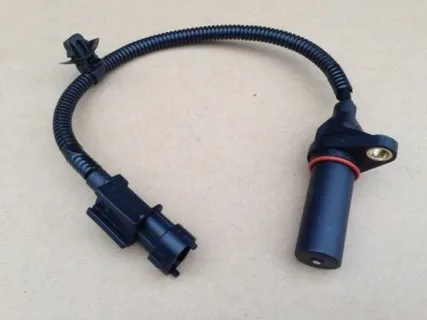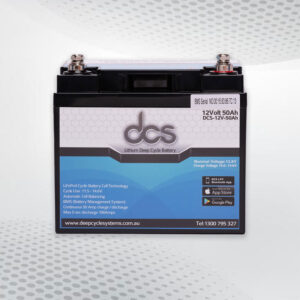The Vy Commodore ABS Sensor plays a critical role in the safety and performance of your vehicle. As part of the anti-lock braking system, it helps maintain traction by preventing the wheels from locking up during braking. Understanding how this sensor works, identifying common issues, and knowing how to perform routine maintenance can help ensure the longevity and effectiveness of your ABS. In this blog post, we’ll cover everything you need to know about maintaining your Commodore ABS Sensor. We’ll explore the signs that your ABS sensor might fail, such as unusual braking behaviour or warning lights on your dashboard.
Understanding the Function of the VE Commodore wheel speed sensor
The wheel speed sensor in the VE Commodore plays a crucial role in the vehicle’s overall performance and safety systems. This sensor, typically located at each wheel hub, measures the wheel’s rotational speed. It is an integral component of the Anti-lock Braking System (ABS), Traction Control System (TCS), and Electronic Stability Control (ESC).
Function and Operation
The primary function of the VE Commodore wheel speed sensor is to provide real-time data about the speed of each wheel to the vehicle’s Electronic Control Unit (ECU). This information is vital for various safety features. For instance, during braking, if the sensor detects that a wheel is rotating slower than the others, it signals the ABS to modulate the brake pressure, preventing wheel lock-up. This process enhances vehicle stability and control during sudden stops or slippery conditions.
Signs of Failure
A malfunctioning wheel speed sensor can lead to several issues, including the illumination of warning lights on the dashboard, erratic speedometer readings, and compromised safety systems like ABS or TCS. During normal driving, drivers may also notice decreased braking performance or stability control activation.
Regular maintenance and timely diagnosis of wheel speed sensor issues are essential for ensuring the VE Commodore’s optimal performance and safety. Understanding its function helps drivers appreciate the importance of this component in modern vehicles and encourages proactive vehicle care.
Common Issues with the ABS Sensor
The Anti-lock Braking System (ABS) sensor plays a crucial role in maintaining vehicle safety by preventing wheel lock-up during hard braking. However, like any automotive component, ABS sensors can encounter several common issues.
1. Faulty Readings
One of the most prevalent problems with ABS sensors is providing inaccurate readings, which can illuminate the ABS warning light on the dashboard. Faulty readings often result from debris accumulation on the sensor, corrosion, or damage to the wiring. Regular cleaning and inspection can help prevent this issue.
2. Wiring Damage
The wiring connected to the ABS sensor is susceptible to wear and tear over time. Frayed wires or poor connections can disrupt the signal sent to the ABS control module, causing malfunctions. Due to wiring issues, drivers may experience erratic braking behaviour or a complete ABS failure.
3. Sensor Failure
ABS sensors can fail outright due to exposure to harsh conditions, such as extreme temperatures or moisture. When this happens, the ABS will not function correctly, potentially leading to decreased braking performance and increased stopping distances.
4. Wheel Bearing Issues
In some cases, wheel bearings can wear out, affecting the ABS sensor’s performance. A worn wheel bearing may create excessive play in the wheel hub, causing the sensor to misread wheel speed.
Regular maintenance and prompt attention to any ABS-related warning lights can help prevent these issues and ensure the braking system functions safely and effectively.
Routine Maintenance Tips for the VE Commodore ABS sensor
The Anti-lock Braking System (ABS) sensor in your VE Commodore is crucial in maintaining vehicle safety and performance. Regular maintenance is essential to ensure that this system functions correctly and effectively. Here are some tips to help you keep your ABS sensor in top condition.
1. Regular Inspections:
Make it a habit to inspect the ABS sensor during routine vehicle maintenance. Look for any wear, corrosion, or physical damage to the wiring and connectors. A damaged sensor or loose connections can lead to inaccurate readings, triggering warning lights on your dashboard.
2. Clean the Sensor:
Dirt and debris can accumulate on the ABS sensor, affecting its performance. Clean the sensor gently with a soft cloth or brush to remove buildup. Do not use harsh chemicals that could damage the sensor or surrounding components.
3. Check Wheel Bearings:
Worn or damaged wheel bearings can impact the functioning of the VE Commodore Abs sensor. Regularly check the wheel bearings for any signs of wear, such as noise or looseness. If you notice any issues, it is essential to address them promptly to avoid further complications.
4. Monitor Brake Fluid Levels:
The ABS relies on brake fluid for proper operation. Check the brake fluid levels regularly and top them up as necessary. Additionally, inspect for leaks in the brake lines or around the ABS unit, as these can affect system performance.
5. Professional Servicing:
If you notice any issues with the ABS, such as warning lights or unusual braking behaviour, seek professional assistance. A certified mechanic can diagnose thoroughly and ensure the ABS sensor and system function correctly.
By following these maintenance tips, you can help prolong the life of your VE Commodore’s ABS sensor and ensure safe driving. Regular care enhances performance and contributes to your overall driving safety.
Troubleshooting the ABS Sensor VE Commodore
The VE Commodore’s Anti-lock Braking System (ABS) is a critical safety feature that prevents wheel lock-up during braking, ensuring better control and stability. If you experience issues with your ABS, such as the warning light illuminated on the dashboard or a decrease in braking performance, it may indicate a problem with the ABS sensor. Here are some steps to troubleshoot this component effectively.
First, check the ABS warning light. If it is illuminated, it indicates that the system has detected a fault. Use an OBD-II scanner to retrieve any stored trouble codes from the vehicle’s ECU. Codes such as C0050 or C0051 may indicate specific issues with the ABS sensor or circuit. These codes will help you pinpoint the exact problem, allowing for a more efficient repair process.
Next, physically inspect the ABS Sensor VE Commodore. The VE Commodore has individual sensors mounted near each wheel. Check for visible damage, corrosion, or loose connections at the sensor and wiring harness. Additionally, ensure the sensor is clean and free from debris, as dirt or metal shavings can interfere with its operation. If the sensor appears damaged, it may need to be replaced.
Another critical step is to test the sensor’s resistance using a multimeter. Disconnect the sensor from the wiring harness and measure the resistance across its terminals. A typical reading should be between 800 and 1,200 ohms. If the reading falls outside this range, the sensor is likely faulty and should be replaced.
Finally, after addressing any issues, clear the trouble codes using the OBD-II scanner and take the vehicle for a test drive. Monitor the ABS light and ensure proper braking performance. By following these troubleshooting steps, you can effectively diagnose and resolve ABS sensor issues in your VE Commodore, ensuring safer driving.
Replacing the Commodore ABS Sensor
The ABS (Anti-lock Braking System) sensor is crucial to your Commodore’s braking system, ensuring optimal performance and safety. If you notice warning lights on your dashboard or experience issues with your braking system, it may be time to replace the ABS sensor.
Tools and Materials Needed
To replace the ABS sensor, you’ll need a few basic tools, including a socket set, a wrench, a screwdriver, and safety goggles. Additionally, having a replacement ABS sensor specific to your Commodore model is essential.
Step-by-Step Replacement Process
Safety First:
Begin by ensuring your vehicle is on a flat surface and engage the parking brake. Disconnect the battery to prevent any electrical issues while working.
Locate the ABS Sensor:
The ABS sensor is usually found near the wheel hub. Remove the wheel to access the sensor easily.
Disconnect the Sensor:
Unplug the wiring harness from the sensor. Use a socket or wrench to remove the sensor from its mounting location.
Install the New Sensor:
Position the new ABS sensor, securing it with the original mounting hardware. Reconnect the wiring harness.
Reassemble and Test:
Replace the wheel and lower the vehicle. Reconnect the battery and start the engine. Check for any warning lights on the dashboard and test the brakes to ensure proper functionality.
Enhancing the ABS Sensor Longevity
The Anti-lock Braking System (ABS) sensor is crucial for vehicle safety, ensuring optimal braking performance. To extend the lifespan of your ABS sensor, consider the following maintenance tips.
Regular Inspections
Frequent checks are essential for identifying potential issues early. Inspect the ABS sensor and its wiring for any wear, damage, or corrosion. Catching these problems early can prevent more significant failures down the line.
Keep the Area Clean
Dirt and debris can accumulate around the ABS sensor, causing interference and false readings. To ensure it operates effectively, regularly clean the sensor area. Use a soft cloth or a brush to remove dirt without damaging the sensor.
Avoid Harsh Driving Conditions
Driving in extreme conditions can strain the ABS sensor. Try to avoid potholes, debris-laden roads, and heavy off-road conditions. If such driving is unavoidable, consider having your ABS inspected more frequently.
Use Quality Parts
When replacing or servicing your ABS sensor, always opt for high-quality parts. OEM (Original Equipment Manufacturer) sensors are designed to fit your vehicle perfectly and offer better longevity than cheaper alternatives.
Monitor Warning Lights
Keep an eye on your dashboard warning lights. If the ABS light activates, it may indicate a sensor issue. Addressing problems promptly can help prevent further damage and extend the overall life of your ABS.
Conclusion
Keeping the Vy Commodore ABS Sensor clean and regularly inspecting it for damage can significantly enhance your vehicle’s braking performance. Simple maintenance steps, such as using a soft brush to remove debris and checking the wiring connections, can prevent many common issues. It’s also crucial to avoid exposing the sensor to high-pressure water, which can cause damage. Being proactive about these routine checks can help you avoid unexpected problems and ensure your ABS functions correctly. Remember, promptly addressing any ABS warning lights and consulting a professional mechanic when necessary can substantially improve your vehicle’s safety and reliability.
FAQS
Q1: How often should I check my Vy Commodore ABS Sensor?
A1: Inspecting the Vy Commodore ABS Sensor during routine vehicle maintenance appointments or at least every six months is recommended. Regular checks help identify issues early and maintain optimal performance.
Q2: Can I clean the ABS sensor myself?
A2: Absolutely, you can clean the sensor yourself using a soft brush and a mild cleaner. Make sure to handle the sensor gently to avoid any damage. Avoid using high-pressure water directly on the sensor to prevent potential damage.
Q3: What should I do if the ABS warning light stays on?
A3: If the ABS warning light remains illuminated, use a diagnostic tool to check for error codes from the vehicle’s computer. If you’re unsure how to proceed, consult a professional mechanic to diagnose and fix the issue.
Q4: Are there any signs that my ABS sensor needs replacing?
A4: Indicators that your ABS sensor may need replacing include the ABS warning light turning on, erratic braking behaviour or the ABS failing to engage during emergency stops. If you notice any of these symptoms, it’s important to inspect the sensor or seek professional assistance.
Q5: Can driving conditions affect the ABS sensor?
A5: Yes, driving in harsh conditions, such as off-road terrain or deep water, can increase the risk of contamination or damage to the ABS sensor. If you regularly drive in challenging environments, it’s advisable to inspect the sensor more frequently.





